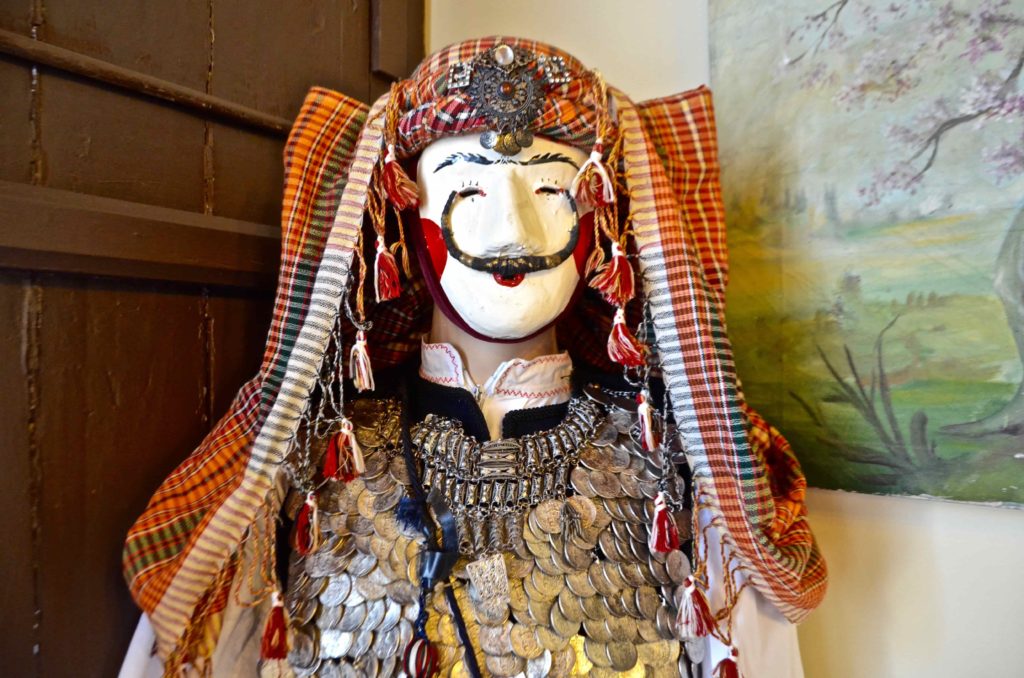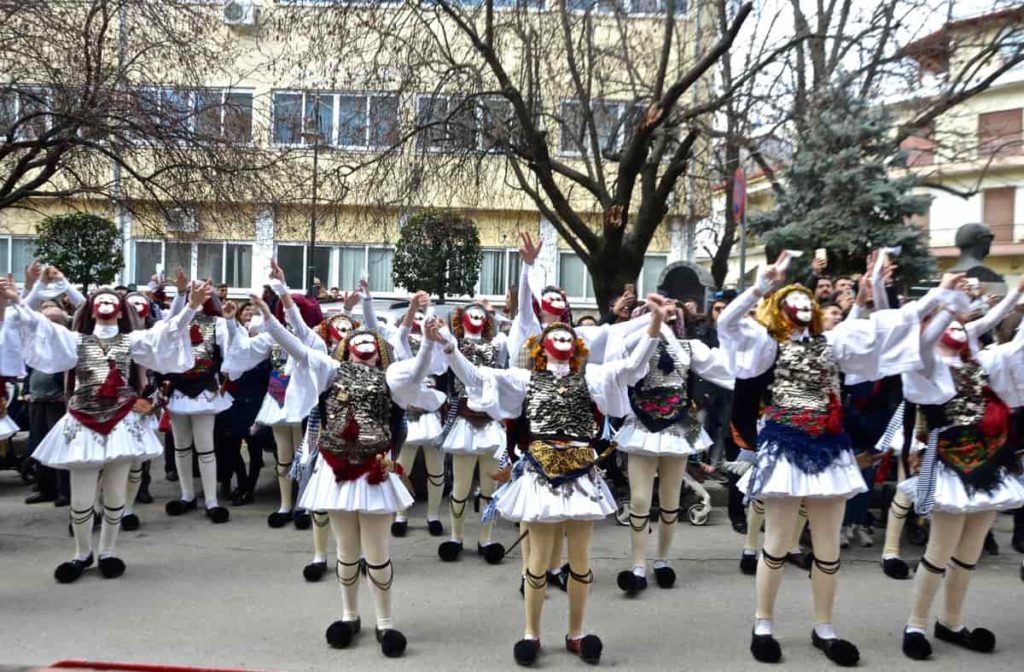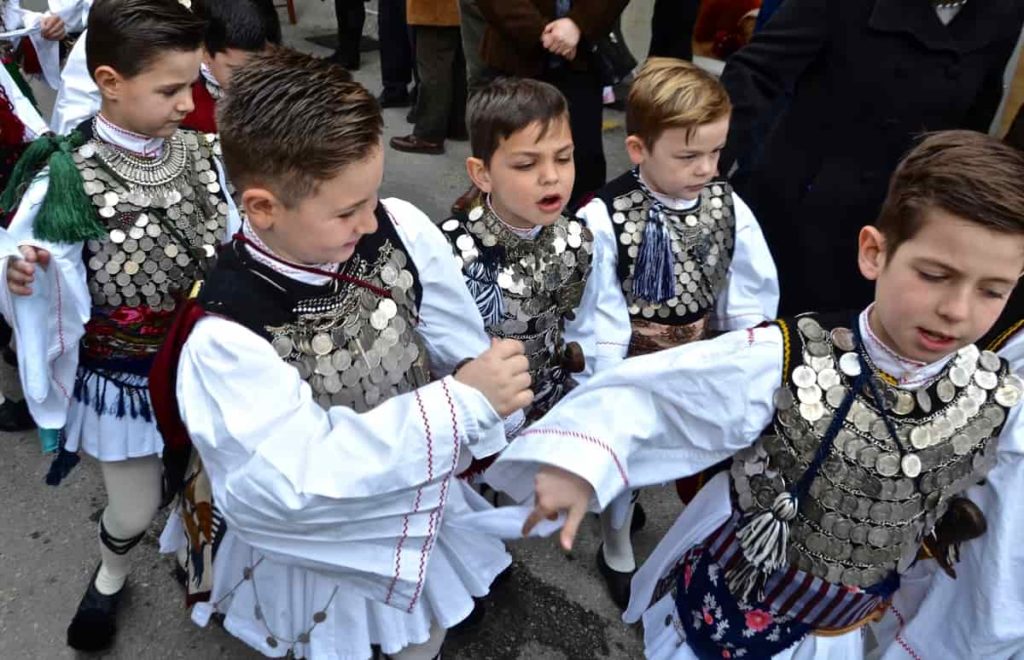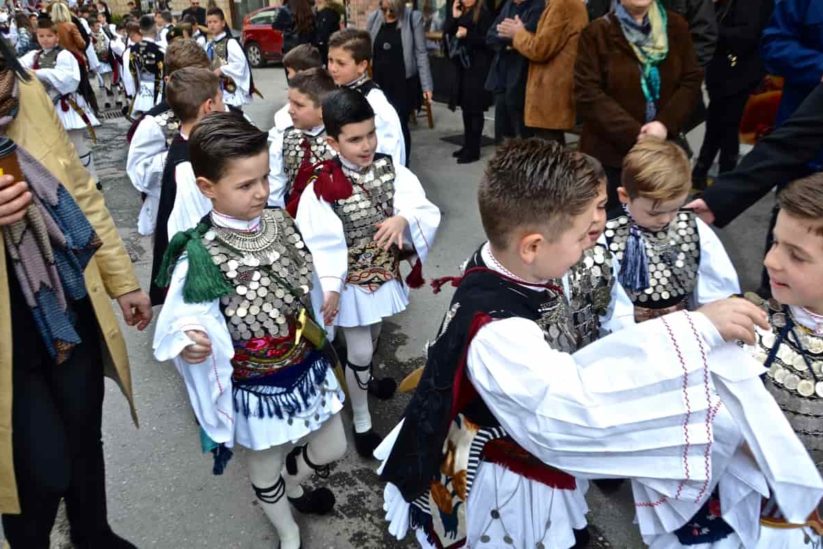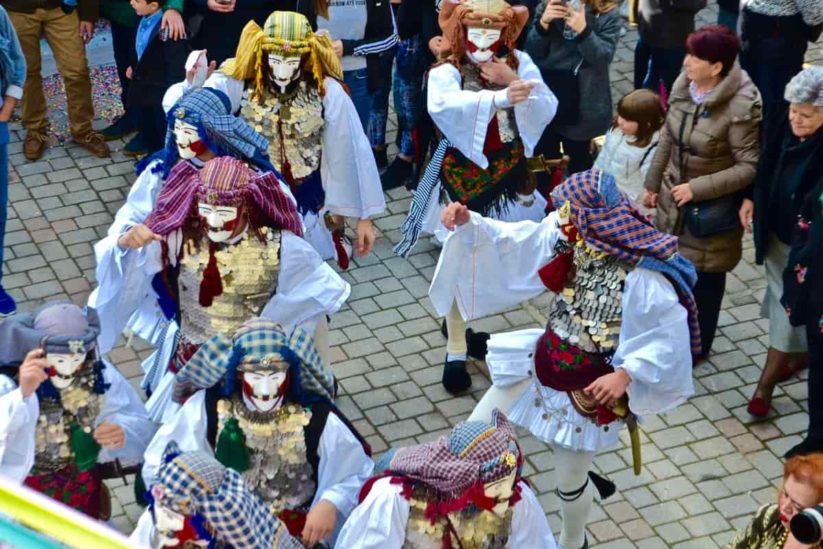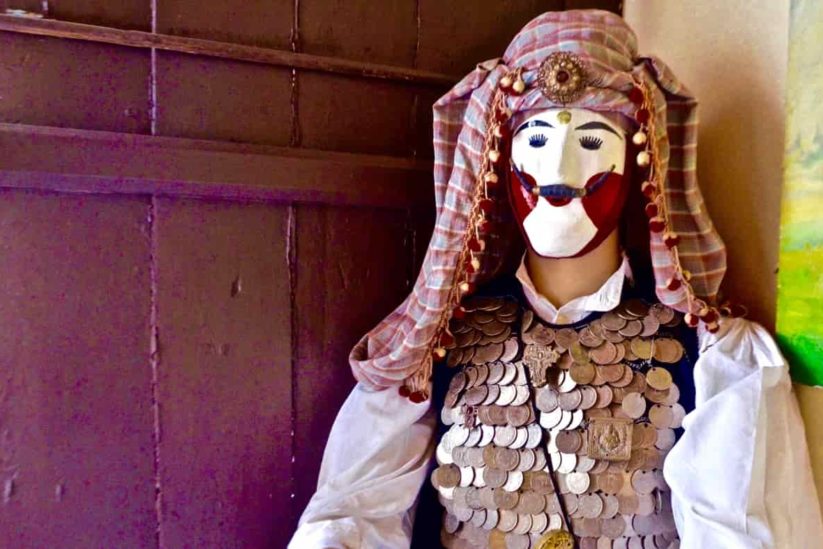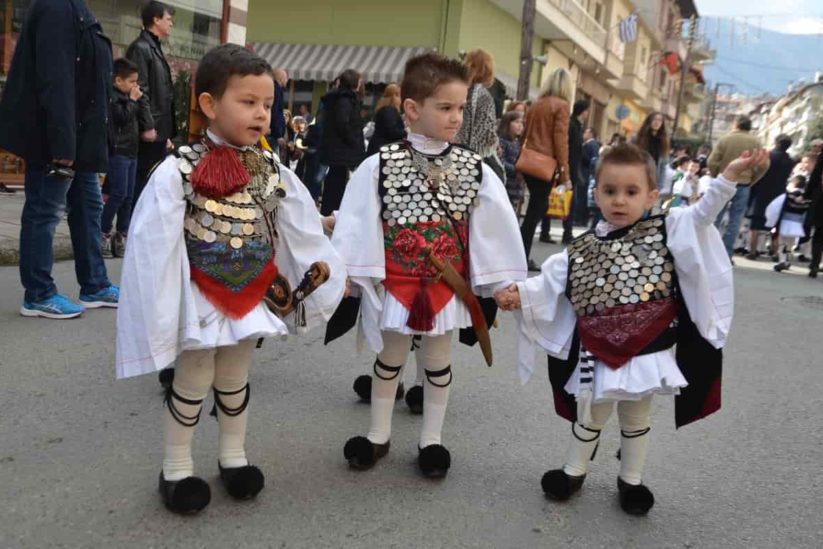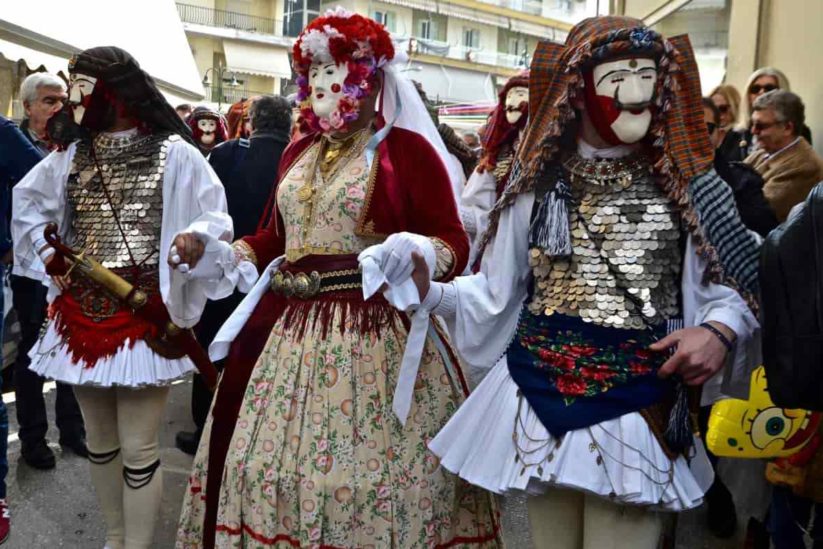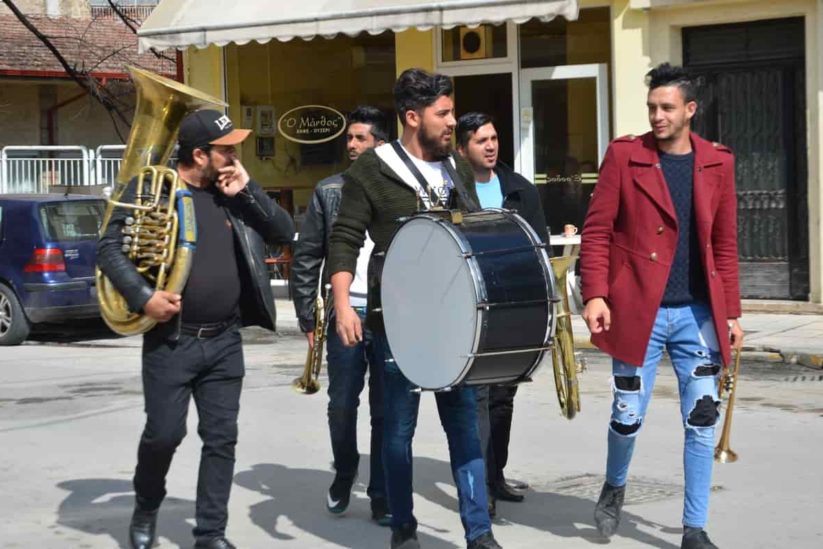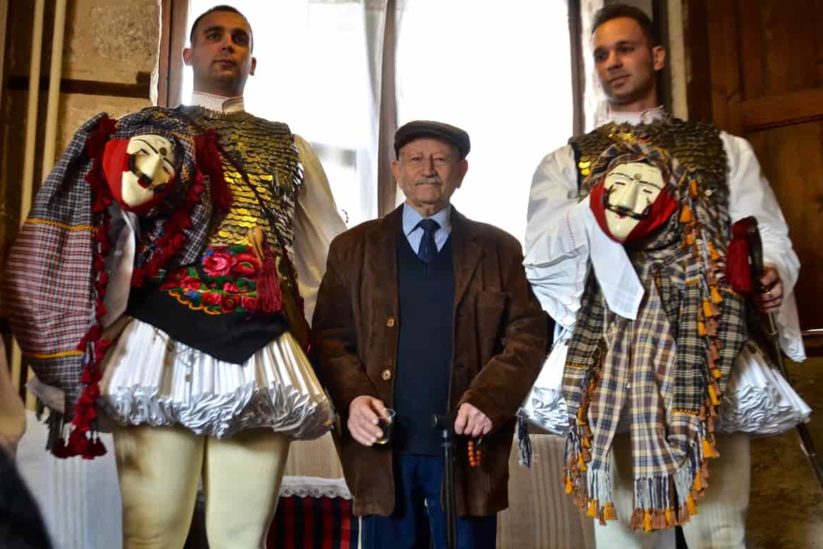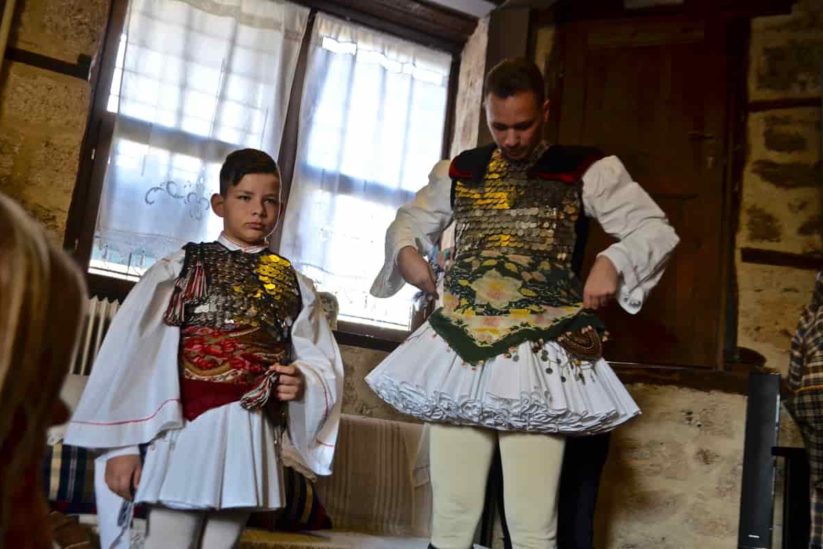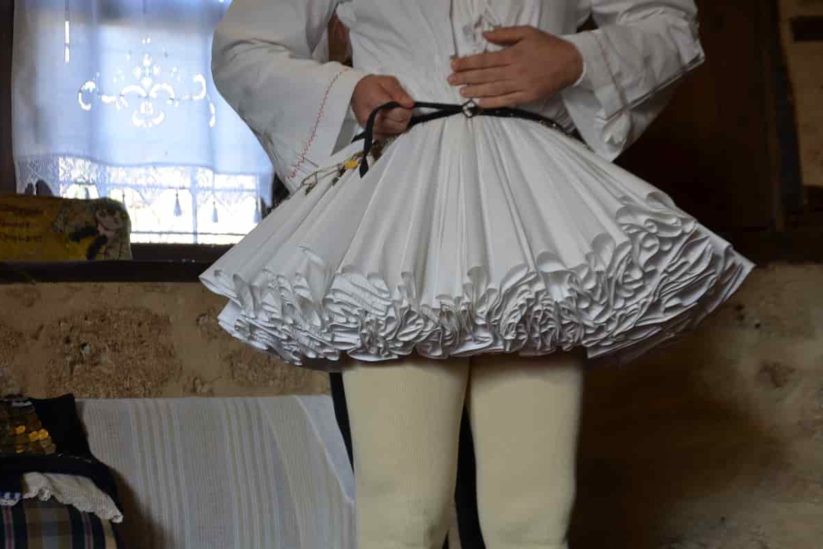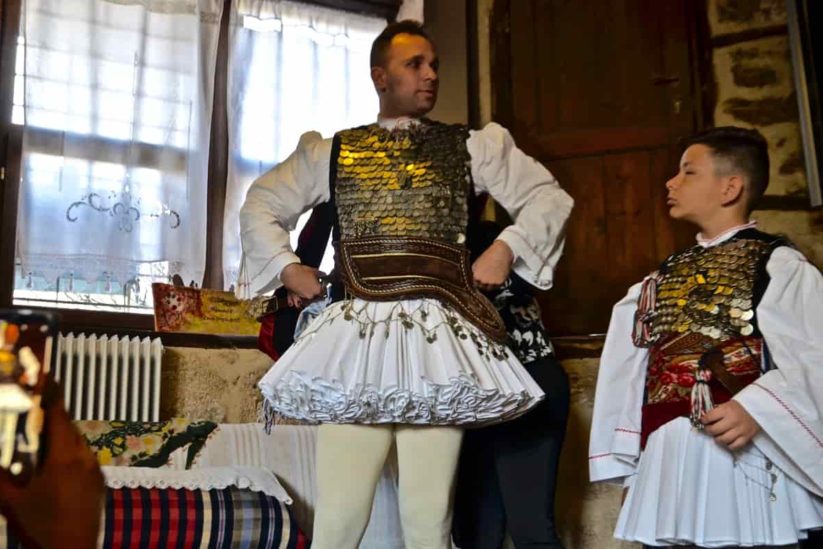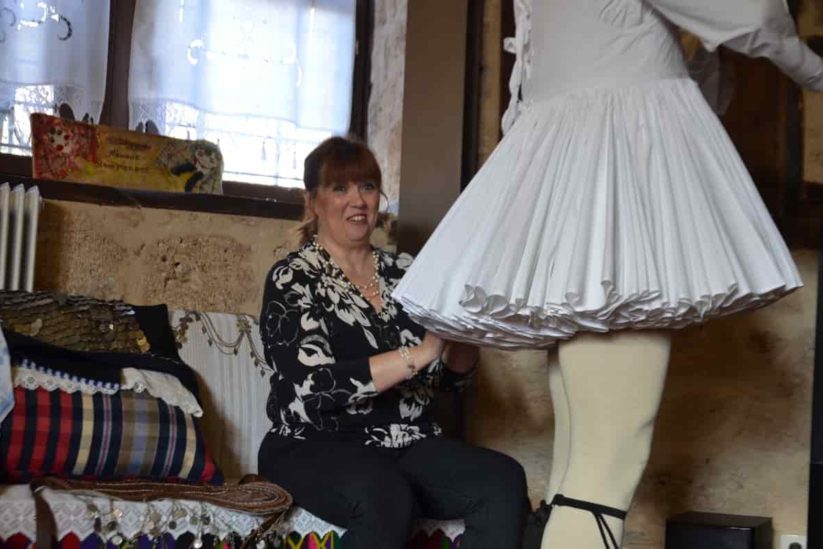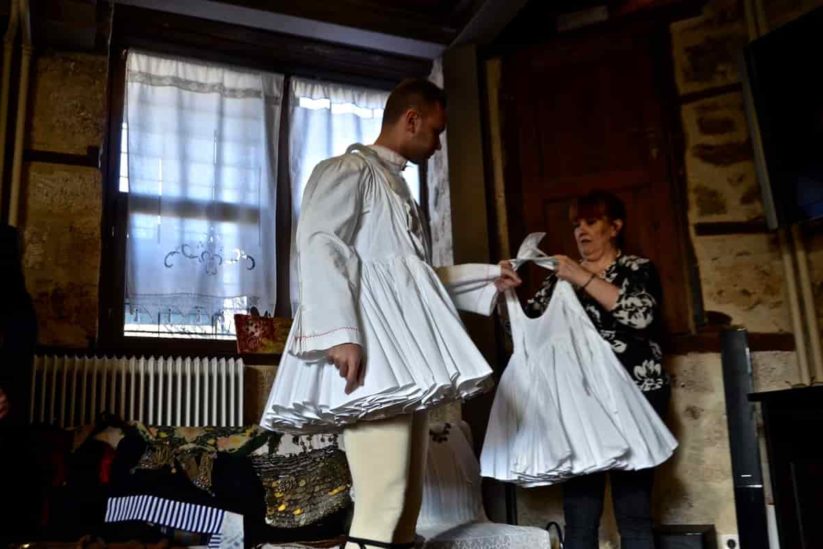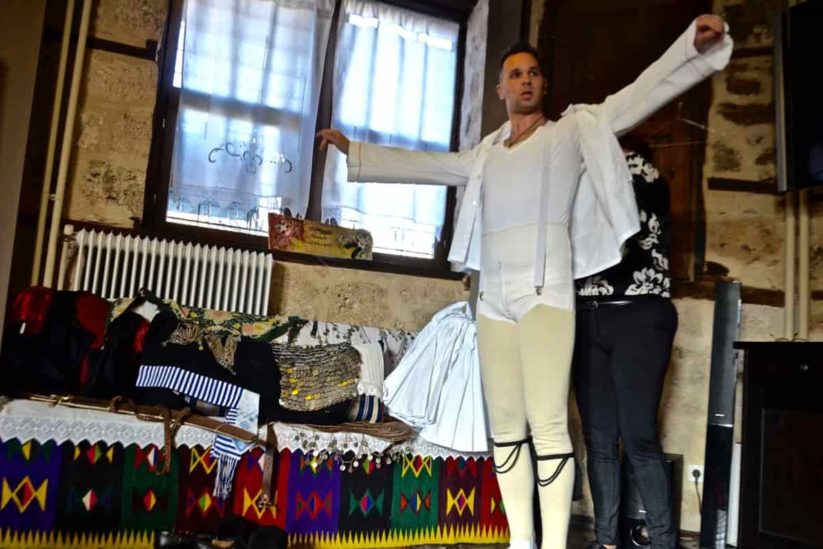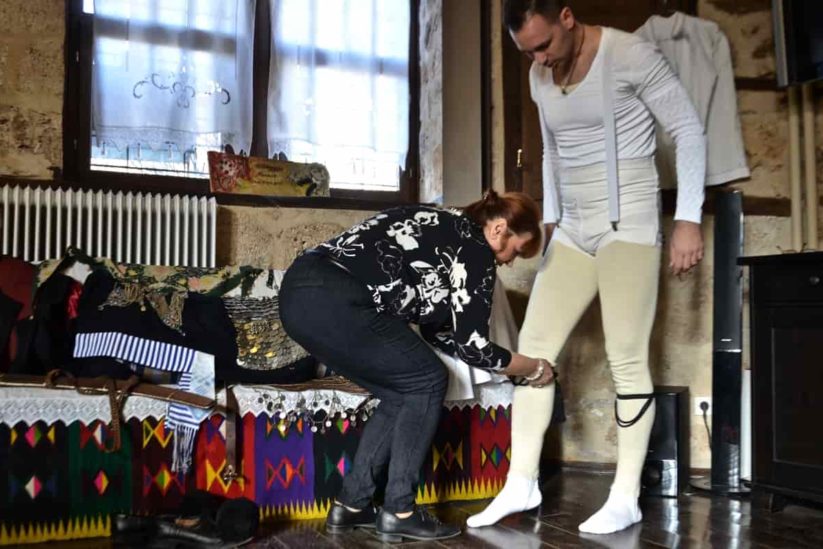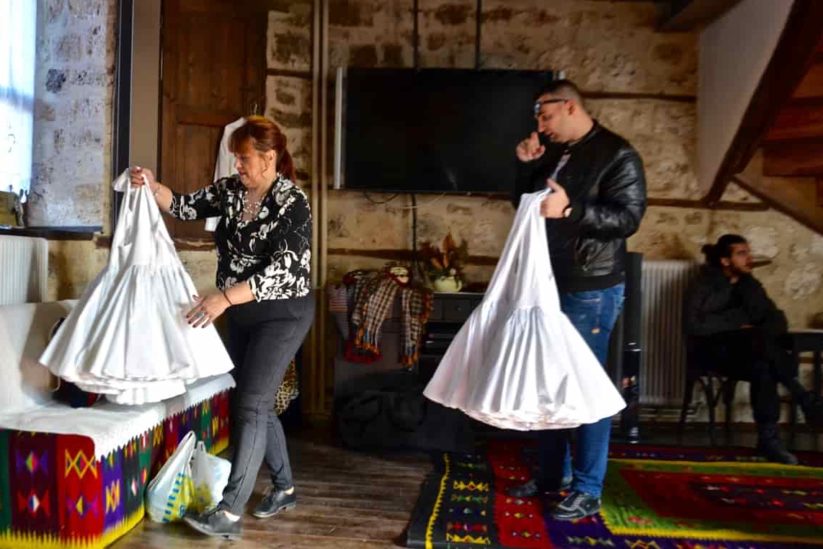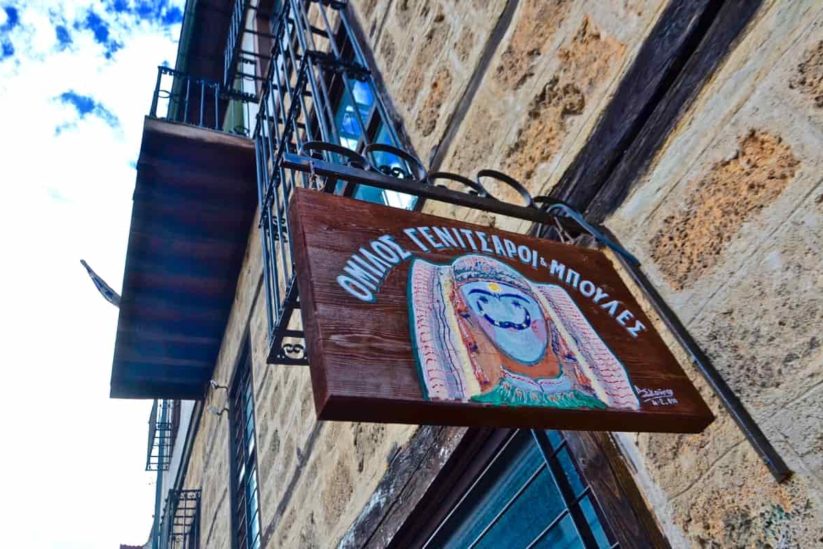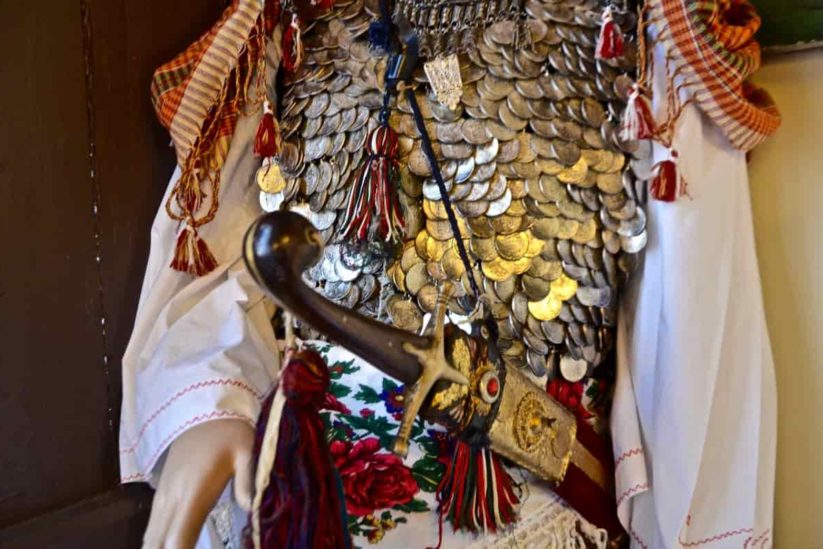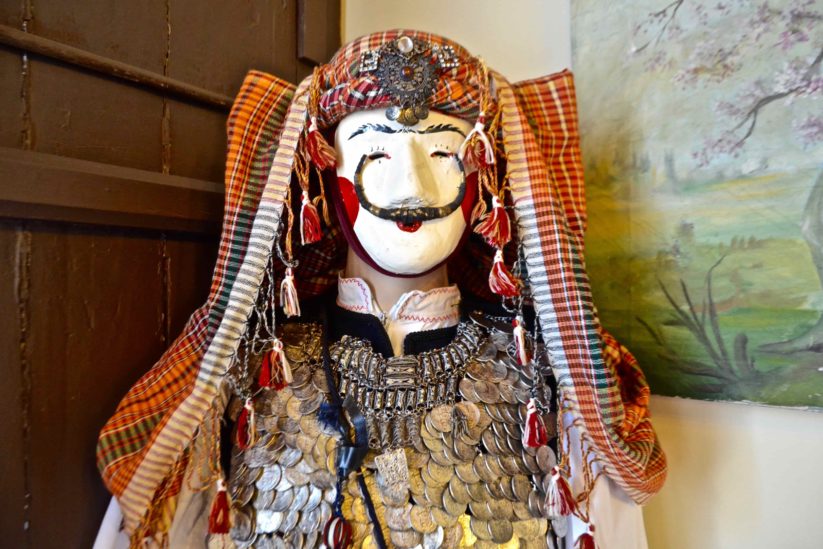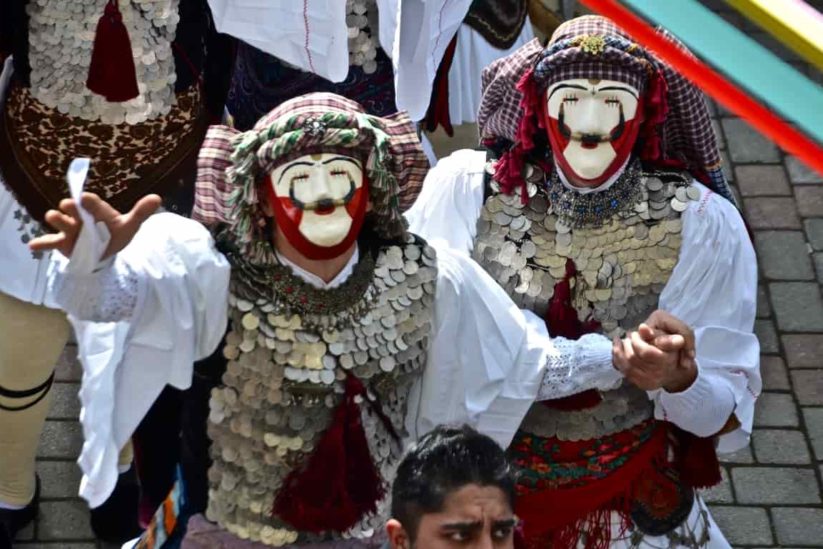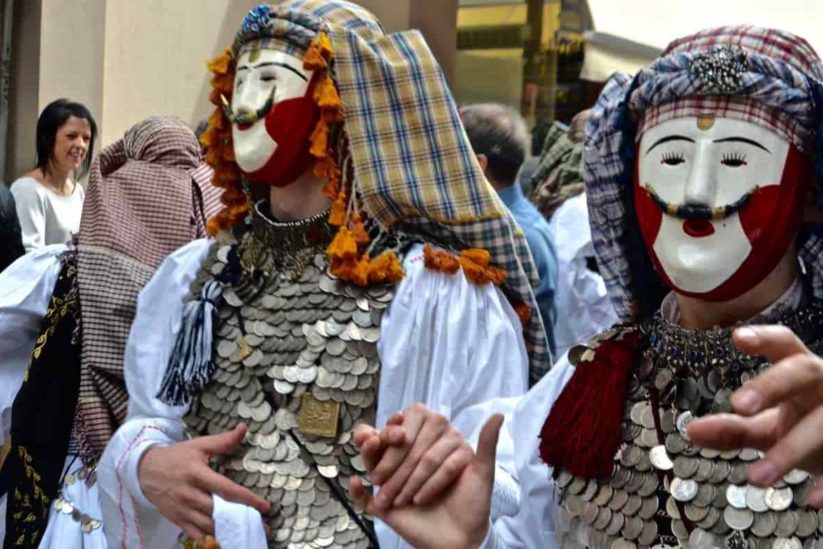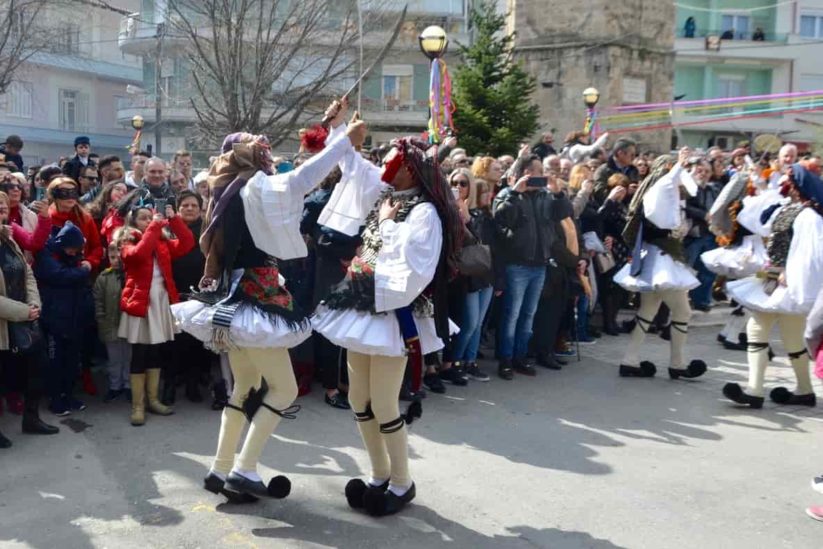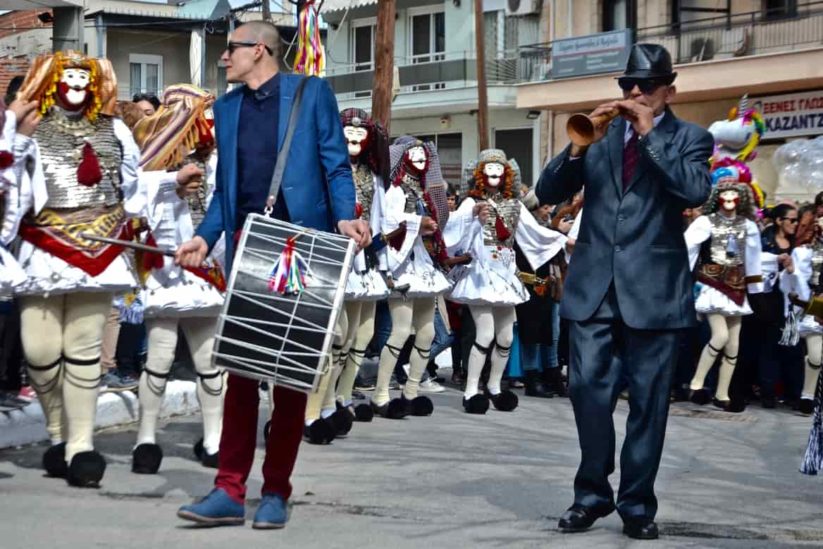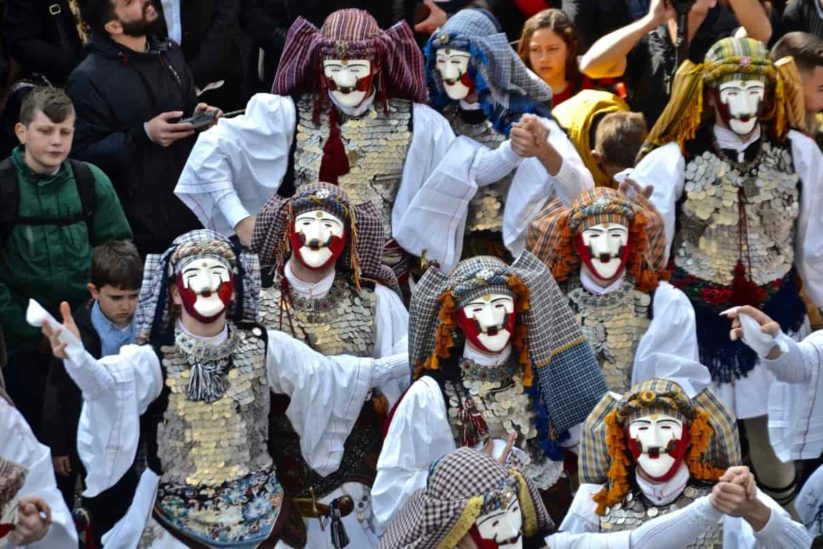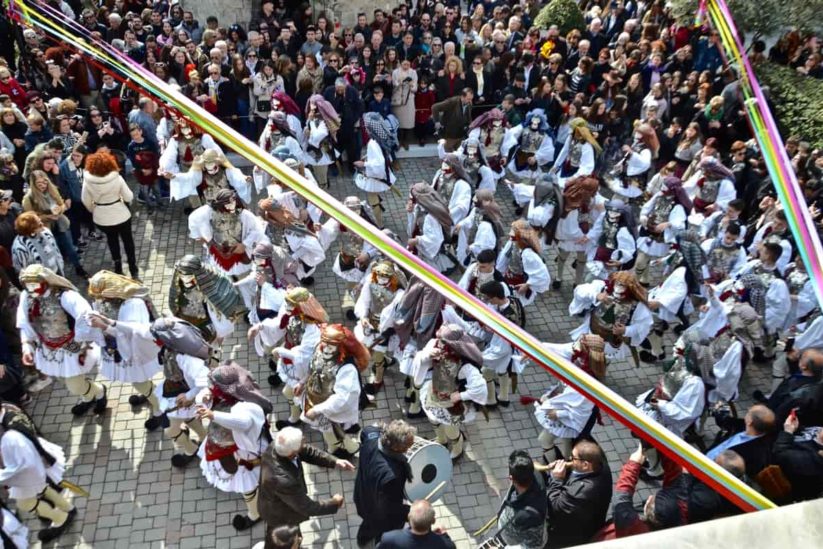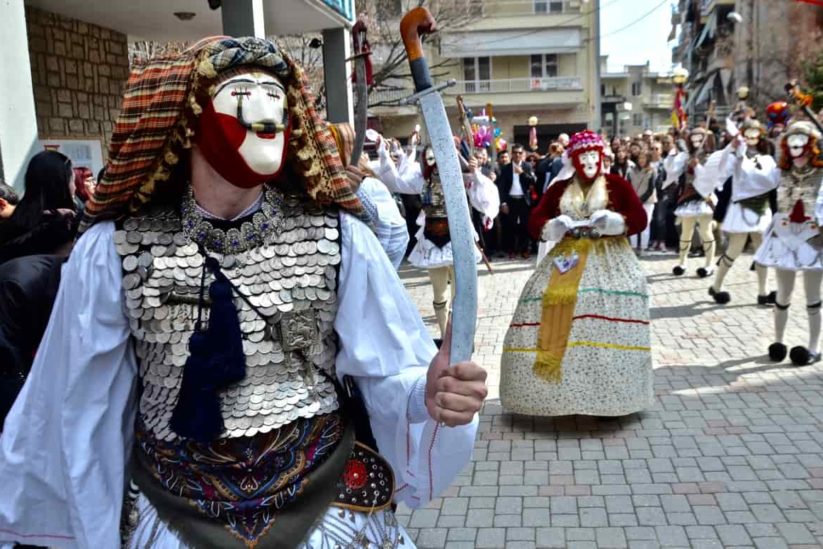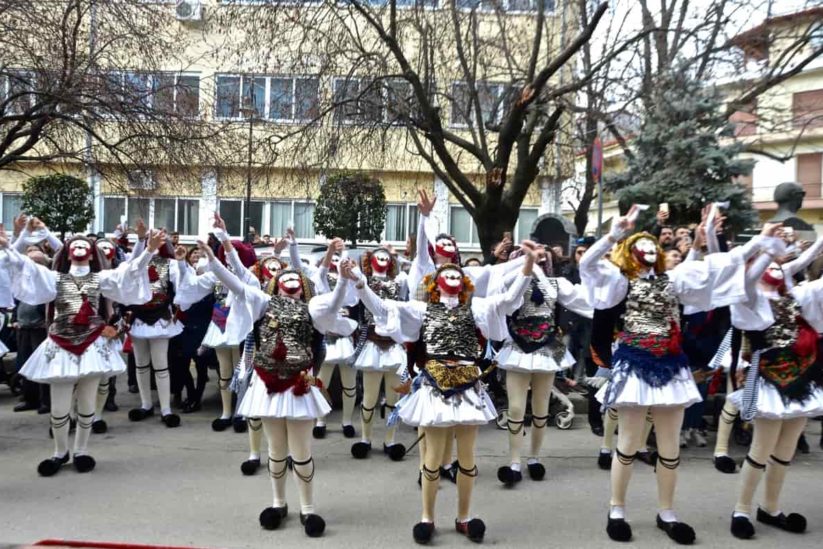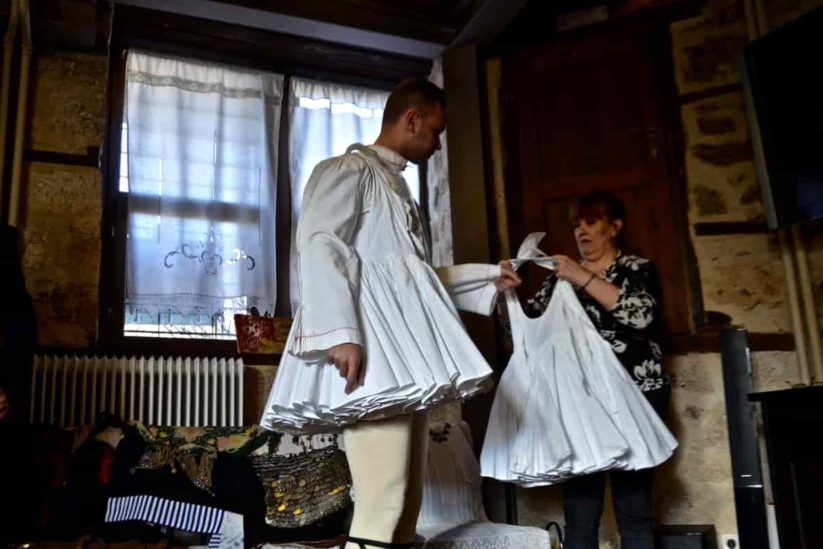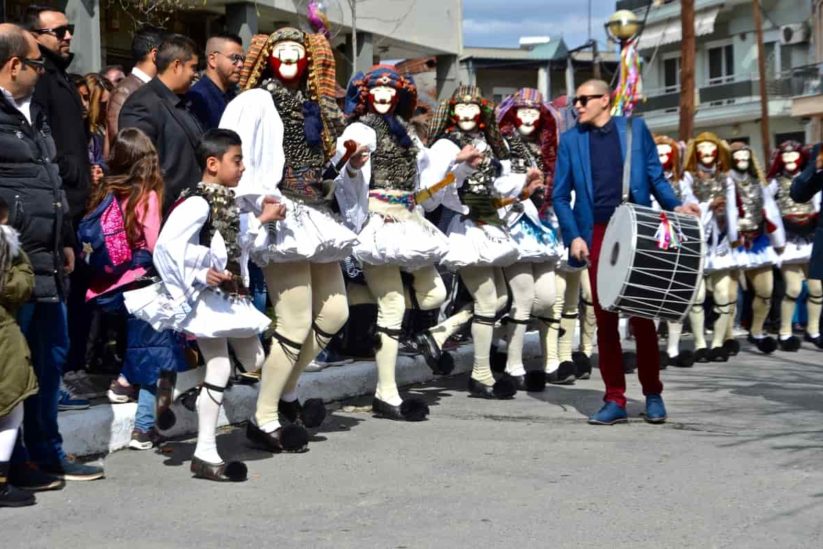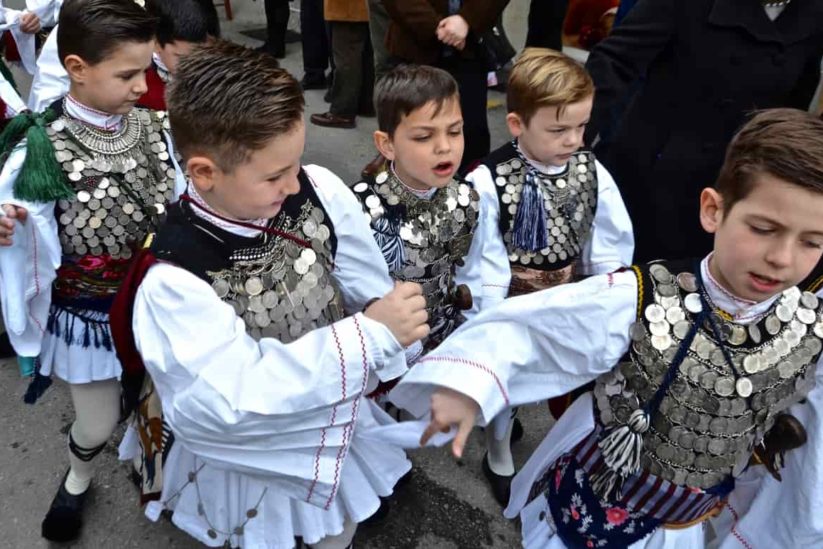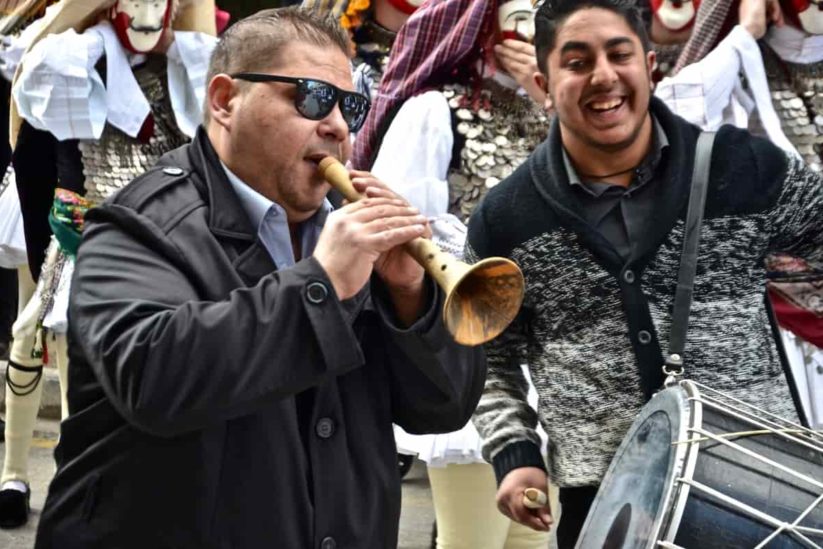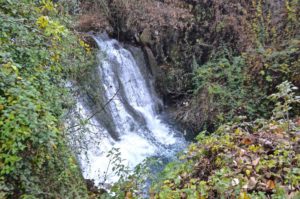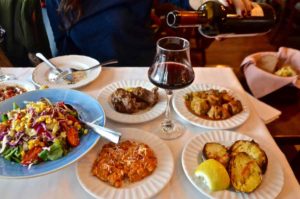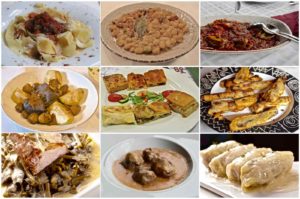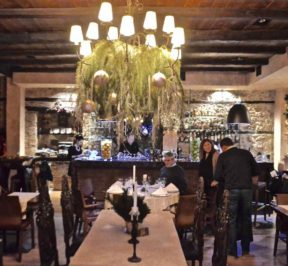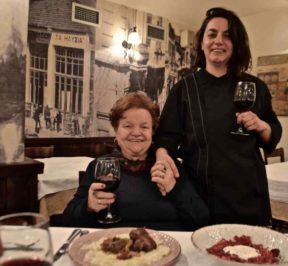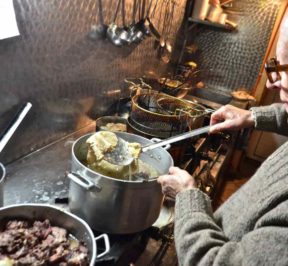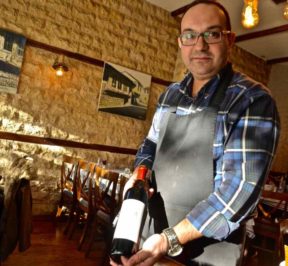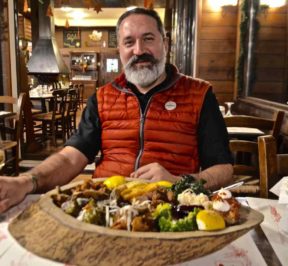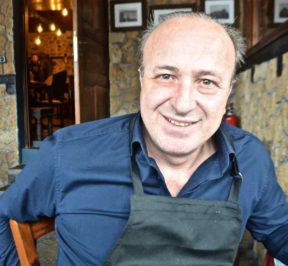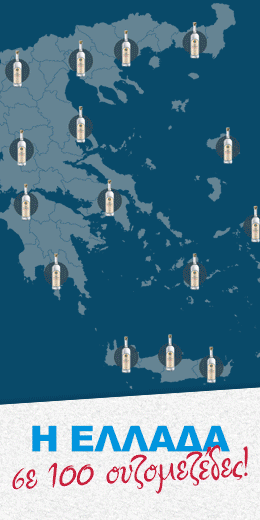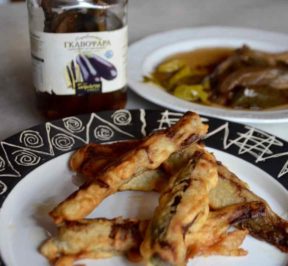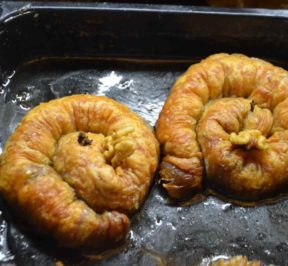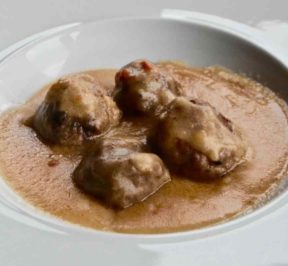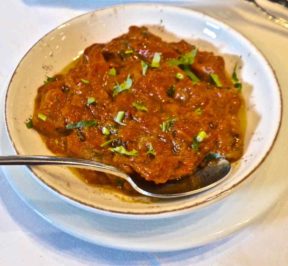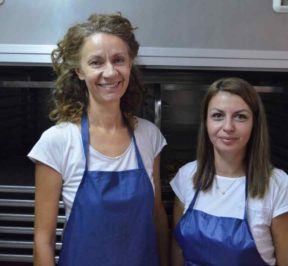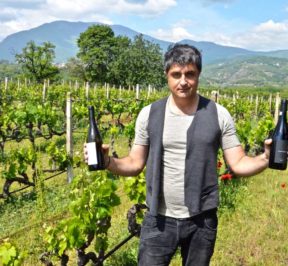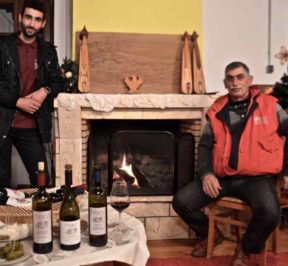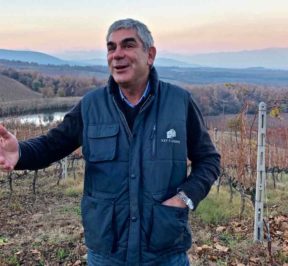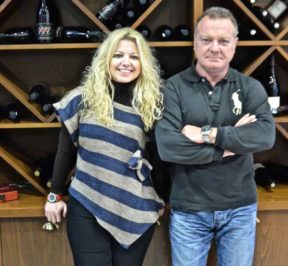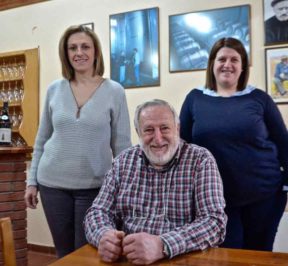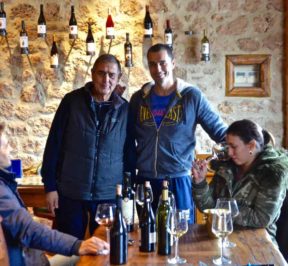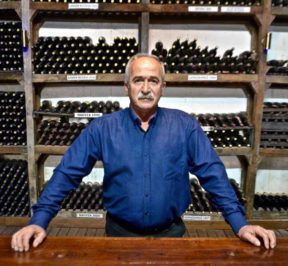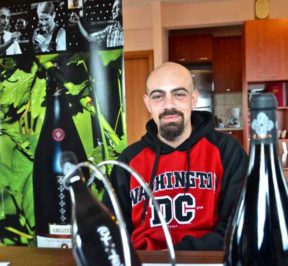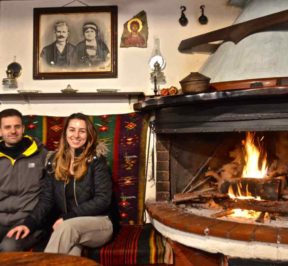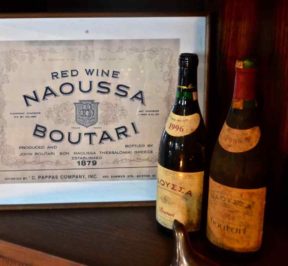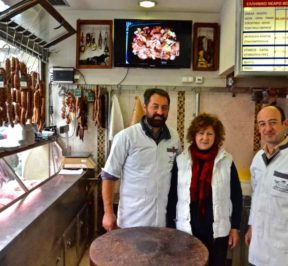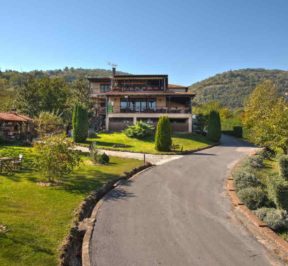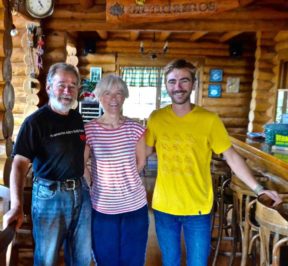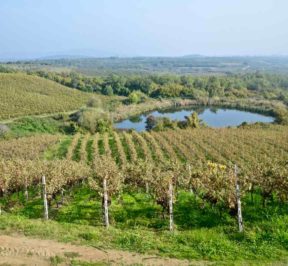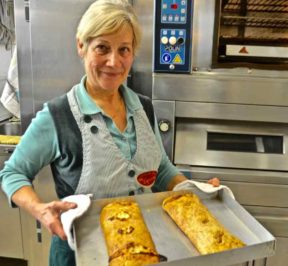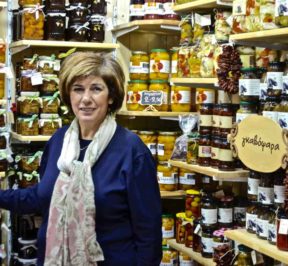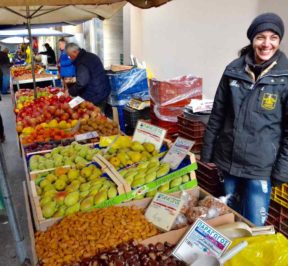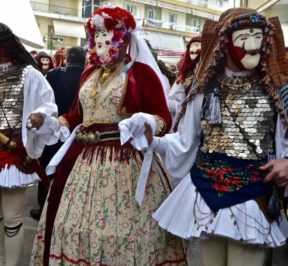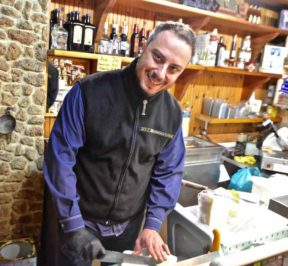Boules - Janissaries
Bulls or Janissaries is her carnival custom Naoussa which is considered perhaps the most interesting in Greece. Today we can hardly find its roots, all its elements lead us to the fact that its beginning comes from very old times and in the process it was enriched with new historical and ritual elements. It is mainly one dance event, because the action of the people who participate in its performance is a dance action.
The main elements of the custom are the following:
- The formation of the bundle presupposes the strict acceptance and observance of certain rules of performance.
- The gender of the performers is only young men.
- The female figure (bride-bull) is always played by a man.
- The dress, disguise and behavior of the performers are governed by traditional rules.
- The musical instruments, the dances, the itinerary, are predetermined by the ritual, which is followed unchanged over the years.
We had the good fortune and the joy to attend "Janissaries and Boules" group housed in a traditional listed building near the center of Naoussa and next to the river of Arapitsa, which has been restored and is also known as "Maki Watermill". There we learned a lot of facts of the story of the event but also watched the ritual of dressing.
The performers (the participants in the ceremony) were and always are young men. Their number in the past seems to have been 6-12, while today 100-150 and so many other small children participate. The first costume of the performers started on the eve of Lent Sunday. They used to start on Saturday night, because all the silver was sewn one by one on Boula's clothes. Today, however, the dressing starts early on Lent Sunday, because the large volume of silver is already ready, sewn on a vest specially made for the occasion.
The ritual of dressing the janissary was performed on Stergio Topouzi, who participates in the events for 22 years, from the age of 8, with the help of his mother (no janissary can dress as a monk). The clothes and accessories that Stergios wore (the dress of the janissary or boulas) were:
- The benign, long men's underwear up to the ankle that ties with a fabric cord.
- The betsfes, white socks that reach from the thigh to the ankle and are worn over the binivreki. In order to fasten the beets, they used to put a strap in the middle. The bats had two laces that were tied to this waist strap so that they would not fall.
- The Buddhists, black fabric straps that hold the socks (with a tassel on the end) and are tied below the knee to the boots.
- Η contela, shirt with very wide sleeves, embroidered on the chest, on the collar and on the edge of the sleeves with silk thread in herringbone pattern.
- Η skirt, is the most basic piece in Boula's costume. It is short armatoliki, reaches 4-5 fingers above the knee and has 300 to 400 lagiolias (pleats), in contrast to that of the Peloponnese and Central Greece which reaches 15-20 cm below the knee and has a few ridges.
- The piss is a type of vest worn over the shirt, made of velvet or woolen fabric. It is embroidered with carousels, tertiaries and karmadas (items of stitching with gold thread). The pistil was tied tightly to the chest and in the past a white cloth was sewn on top, on which the silver was sewn.
- The belt for the waist, it was narrow and the same as what the Naoussa grooms wore with their salwar kameez at the wedding. It is woven from silk and painted with natural paint from agitsi (ion). It has white and lilac stripes and on the edge fringes that fall on the skirt.
- The seliahi, enters in the middle above the belt. It is made of many layers of leather and was used as a wallet, or case for knobs and knives.
- Η fight, the yatagani - knife for dancing.
- Ο face or mask is perhaps the most important element of the costume. A thick cloth is placed on a special mold and on it plaster that is waxed from the inside, in order to keep the wearer cool. The face was painted white and polished by a special craftsman. The mustache is made of horsehair and tar, while the composition of the colors is based on the chicken egg. Characteristic of both types of mask (female and male) are the very small eyes and also the small mouth.
- The spruce, or taraboulouz is a belt made of pure silk in non-woven fabric and oriental design and originates from Tripoli, Africa. Its width is about 0.90 m and its length is 3,60 m. The tying of the mask with the taraboulo was always done by a specialist craftsman and it was the most difficult job, because it required a lot of art and patience, so that the head is beautifully tied.
- The handkerchief, to be sewn on the wrist of the right hand for the dance.
- The hats, (socks) made by housewives with white wool.
- The tsarouchia, which used to be made only in Ioannina from teletini leather and are red with a black tassel.
Today for convenience they are sewn on in a vest. Rupees (small coins) are sewn in front of the chest. They are passed on in chains that end in crosses and chameleons. At the top is most often sewn a jordan that starts from the neck. Chameleon we have squares, rounds, triangles and in the shape of a bubble. The purse is the richest jewelry of Boula that adorns the entire back.
The Boula bride, is a man dressed in loose dresses. The head covering is full of flowers, from which tulles and ribbons start. He wears a mustache without a mustache, with red round cheeks and a golden dumbbell. Necessary accessories of her costume are the fine silver on the chest, the saltamarka, the necks, the coins, the gold embroidered belt and the buckle, all accessories from the local women's costume, except the dress that is specially sewn with wreaths, so that I can stand .
The formation of the bunch that will come out in the custom starts of course long before the Carnival. The people who will be the bundle appoint their leader, secure the instruments, search for costumes and silverware. The Old Boules always lend their costumes to the younger ones and help them get dressed. On Saturday night, on the eve of Carnival, the dressing of the custom performers began, which lasted all night and was very tiring. The silver was sewn on the uniform one by one by seamstresses or the women of the house and when the dressing was finished, a special craftsman would come and tie the taramboulo with the mask on the young man's head. The young man is now ready and waiting for the instruments to be heard and to invite him to the bunch.
The instruments used for a long time in the custom are only the bellhops and accompaniments tambourine. The boulouki undertook the payment of the organ players, as well as the expenses for their food and accommodation in Naoussa. Since the 1950s, the two families of zournatzis of V. Psathas and St. appear in the musical life of Naoussa. Pazarentsi whose descendants continue to this day the tradition of their ancestors.
During the picking of the bundle, the young man, dressed from the evening before and from early this morning, is ready. From a distance you can hear the drum and the trumpet calling to pick up the bundle. The instruments, playing a melody of the free rhythmic type Zalistos, will go through all the houses of the young people who participate and one by one will pick them up. The instruments will not pick up the little boys. These go with their fathers to the homes of the elders. When Zalistos is heard, Boula will go out the window or on the balcony of the house to greet the bunch that comes to pick her up. He opens his hands high and greets by shaking his chest right-left, so that the coins he has hung on his chest ring. Then the young man taking his hand and jumping on both his feet, greets all the people of the house as well as those who helped him get dressed.
Arriving at the front door of the house, he makes his cross three times and then greets everyone who came to pick him up. Then, caught in pairs with the instruments playing Zalistos, they start taking the next Boula. The bride-Boula is also ritually prepared by the family of the man who will play her. It is a role that must be played in a serious and proud way. The Boula bride will kiss the hands of all the people in her house and then the whole pack, the organ players and everyone who is there when they take her.
Gradually a procession is formed which has the following arrangement. The youngest boys who do not wear a face precede the older ones. Then the younger Boules are placed, in the middle approximately those that hold the bride-Boula and last the older ones and the leader of the herd. Right behind the leader follow the organ players, to take orders as to the repertoire. For the protagonists of the custom, the dance repertoire is Syggathistos, Papadia, Palia Papadia, Davelis, Sotiris, Nizamikos, Melikes, Mustabeikos, Sarandapente, Souda, Makrinitsa and of course 2 Patinades.
If one of the little boys accompanying the herd can do well in the dance, at the request of his parents (who follow the herd), the leader will determine when and at what point he will be the first to enter the circle and dance as pioneer, while everyone will respect him as a great.
After the gathering of the bunch is finished, they all start together for the City Hall, they plan to get there around noon. At about twelve they gather at the City Hall where the whole of Naoussa is gathered, waiting to see the Boules.
The dancing action of the boulouki began after the visit to the tavern of the lord of the city, from whom the leader of the boulouki had to be given permission to perform the custom. Today all the herds will visit town hall and then they will start their dance course in the streets of Naoussa. As soon as the group reaches the square and the leader goes to give the "credentials" of his pack to the Mayor, the dancing activity of the pack begins.
Zournas plays Zalistos, the Boules, who are couples, lean their bodies back and shake arrogantly. One of each couple, assisted by his partner who is holding him back, makes an overextension to the back, proudly hitting the coins of his chest with nervous movements, in contrast to the bride-Boula who makes temenades, bowing to the ground.
The mayor, the first lord of the place, gives the permission and then the zournas will play "Kato sti Roidos", a dance danced by Boules as a companion. in this skate the fights come out of their cases. After "Until when lads" follows the dance Papadia, usually by the leader of Boulouki.
Next is Makrinitsa, the dance of the Bride, the second protagonist of the ritual, which will drag him with seriousness and magnificence as befits a dance that is fatal and a tribute to one of the most glorious pages of Greek history, the Holocaust and the Holocaust. destruction of Naoussa in 1822 by the Turks. Nizamikos, Sarandapente, Melikes and maybe Souda or Mustabeikos will follow, which can be danced by small children.
Immediately after the dances at the City Hall, the Boules move with the skate, "Until when lads", for the first mahala, where the stop for the dances will take place, for the trio of Lamnia. The Bulls greet every acquaintance they meet, shaking hands and jumping three times on both feet. Reaching the trio, the zournatzides will play the skate of Sanidas.
After the trio, passing through Christidis alley, in the current popular market, they go out to neighborhoods where in each one they stop and dance. After passing Kammena, Pouliana, Batania, they reach the Kiosk. Many Naoussians are waiting here to admire and judge the best dancers.
Arriving in Alonia where there will be a big party, the evening catches them. In this neighborhood, everyone will take off their masks. Here, without masks anymore, they will be able to eat something and drink, from what all the neighboring houses have prepared for them. In the old days they drank water with a special straw and smoking was also done with a special mouthpiece, which fits through the small mouth of the mask since it was not possible for the dancer to take it out all day.
The rehearsal for next Sunday's carnival events was a complete success, and everyone here in the city of Naoussa is ready for the Boules and the Janissaries of 2019. An event whose first testimony is located in 1706 when it was held instead of a memorial service for the children who was avoided due to the reaction of the people of Naoussa, it experienced its great prosperity in the late 19th and early 20th century, it stopped only from 1941 to 1954 (the difficult years of occupation and civil war) and since then it is a custom that makes the people of Naoussa proud. !
Because at this moment, after the crisis of deindustrialization of the region, the closure of the textile factories and the huge unemployment that took place, the great wine of Naoussa, the xinomavro and Bowls, the carnival event that honors the place abroad, as it constantly receives awards at international festivals, mainly for the authenticity of its costumes, can be made the two central axes around which one can develop quality cultural and alternative tourism, that will lead her city in its new renaissance.
Contact
- AddressNaoussa
- CategorySightseeing
- LeaseNaoussa
Lease
PLACE & HISTORY - TRADITIONAL KITCHEN
PRODUCTS - DISHES
PRODUCERS - WINERY

